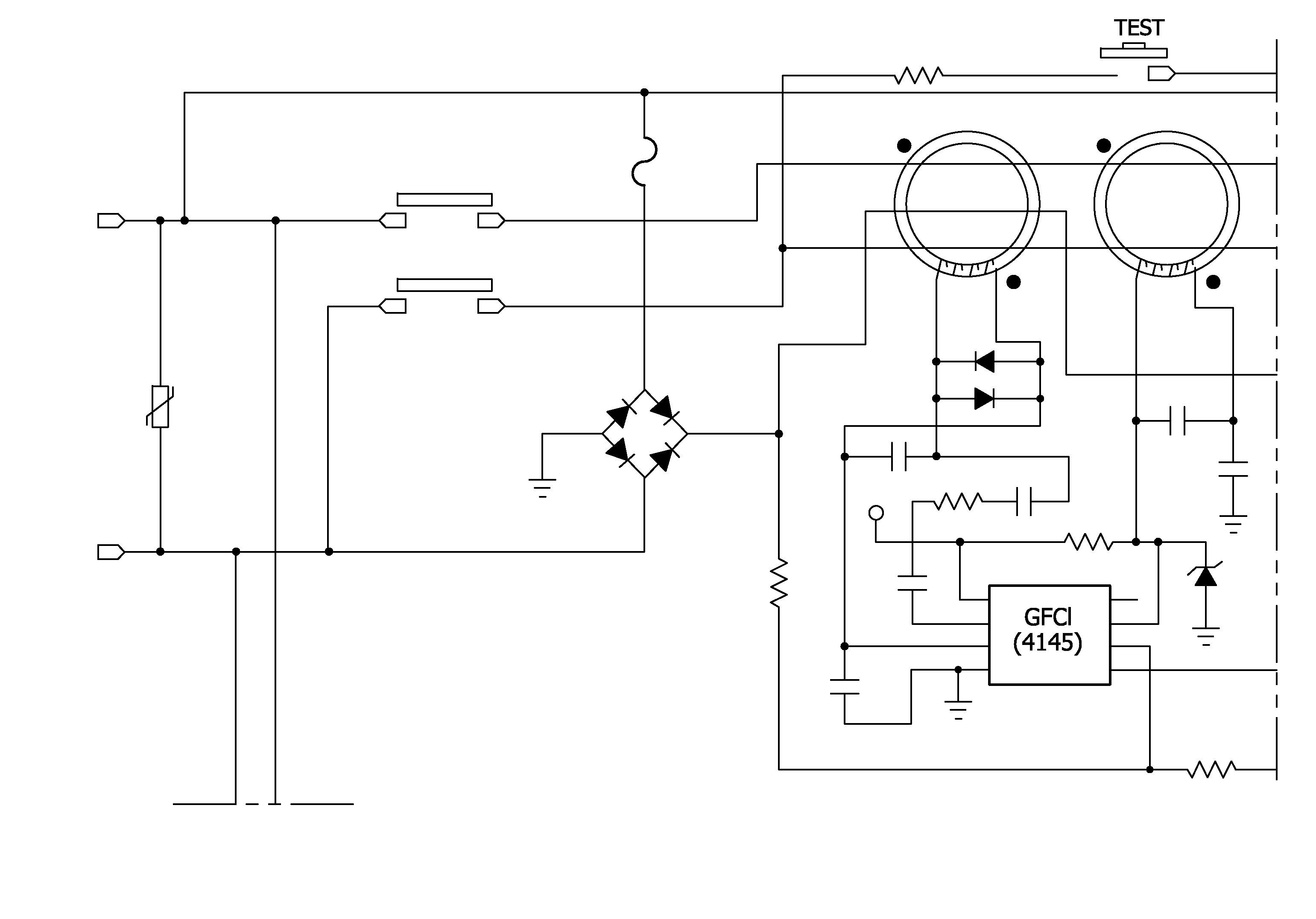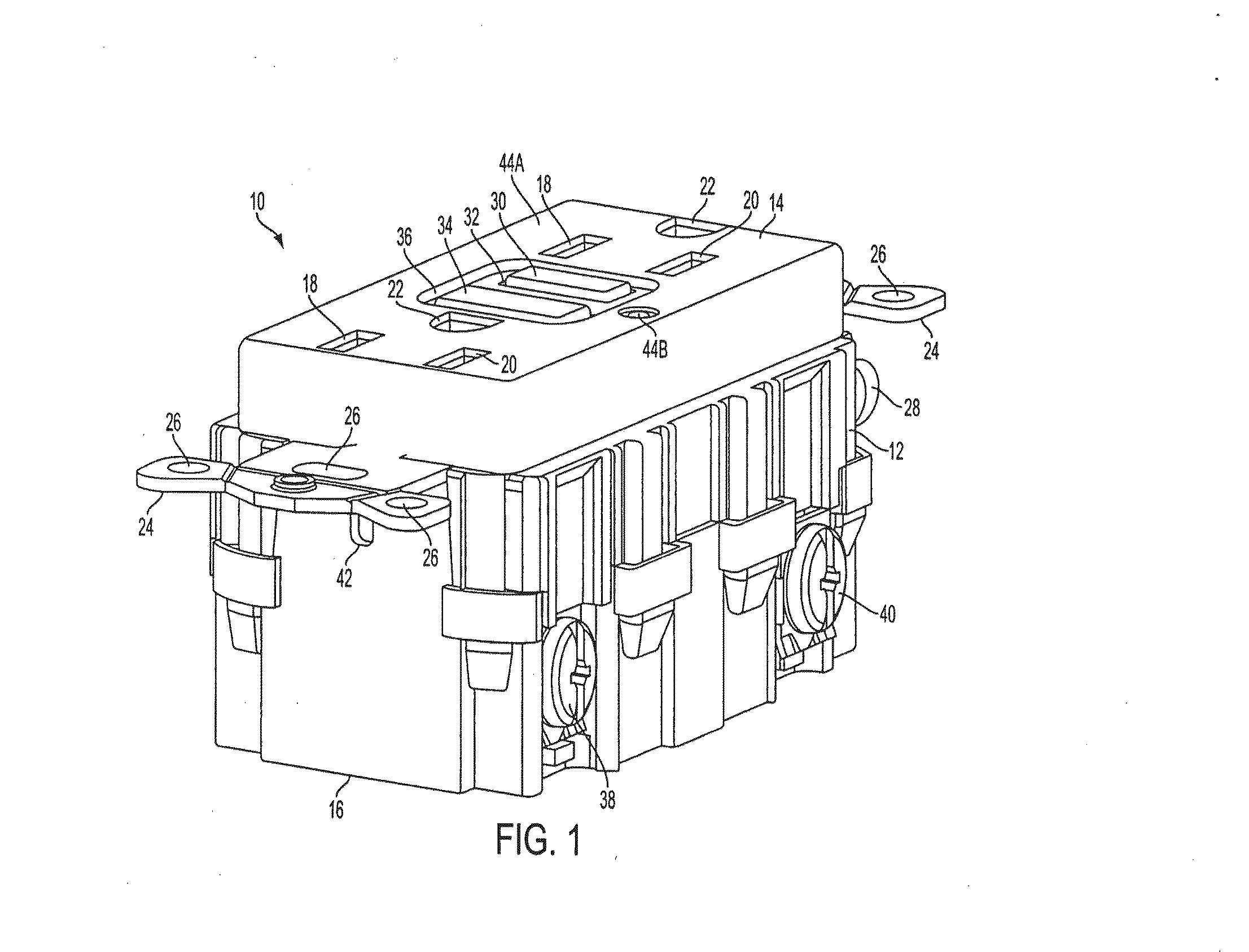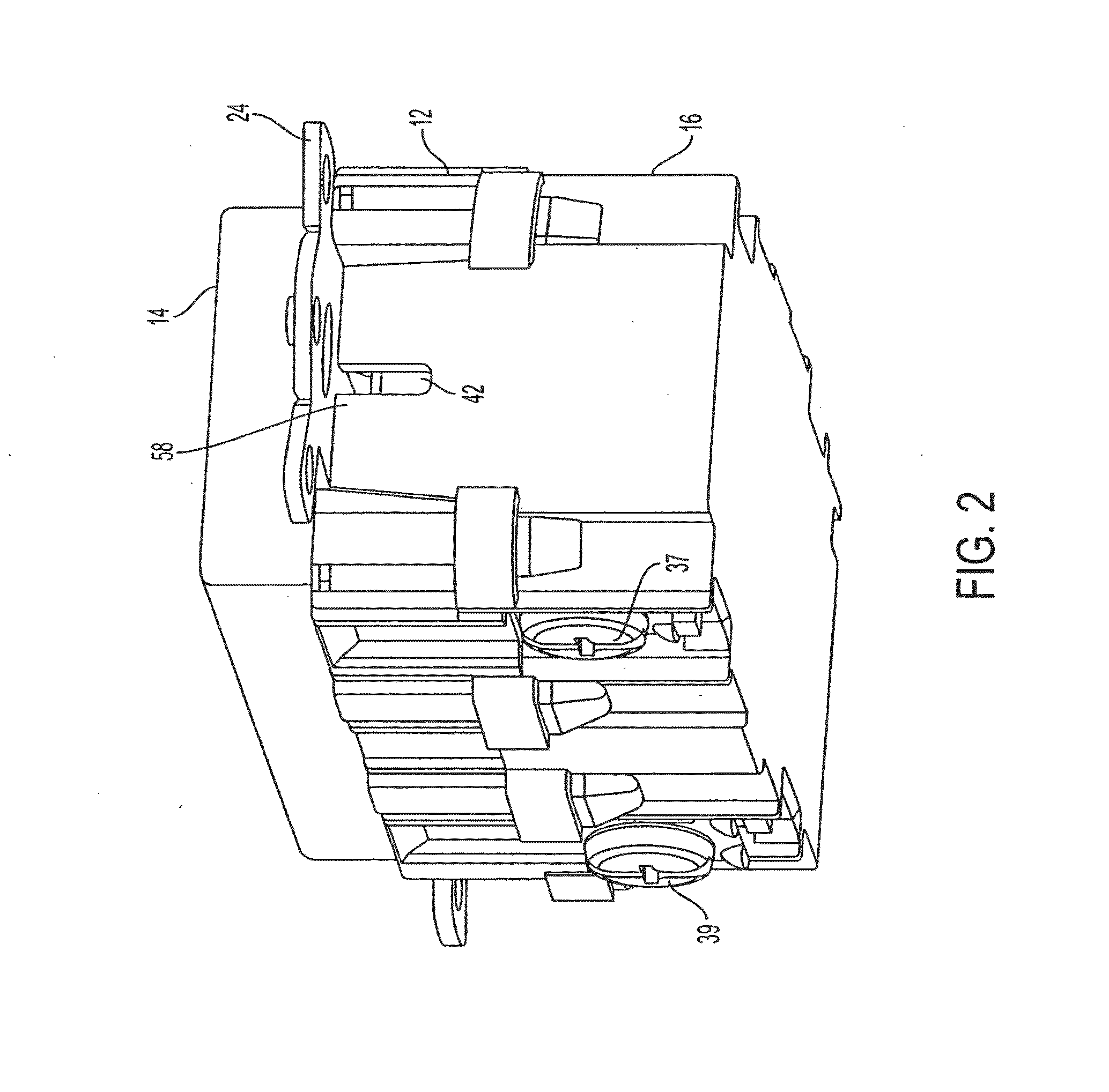Self-testing auto monitor ground fault circuit interrupter (GFCI) withpower denial
a fault circuit interrupter and self-testing technology, applied in the direction of protective switch details, emergency protective arrangements for limiting excess voltage/current, instruments, etc., can solve the problem of device unable to properly detect the ground fault and/or properly interrupt the flow of electrical curren
- Summary
- Abstract
- Description
- Claims
- Application Information
AI Technical Summary
Benefits of technology
Problems solved by technology
Method used
Image
Examples
Embodiment Construction
[0055]FIG. 1 is a perspective view of an example of a ground fault circuit interrupting (GFCI) device 10 in accordance with an embodiment of the present invention. The GFCI device 10 comprises a housing 12 having a cover portion 14 and a rear portion 16. The GFCI also includes an inner housing 13 (See FIG. 4) when the cover portion 14 is removed from the rear portion 16. The cover portion 14 and rear portion are removably secured to each other via fastening means such as clips, screws, brackets, tabs and the like. The cover portion includes plugin slots (also known as face receptacles) 18 and 20 and grounding slots 22. It should be appreciated by those skilled in the art that plugin slots 18 and 20 and grounding slots 22 can accommodate polarized, non-polarized, grounded or non-grounded blades of a male plug. The male plug can be a two wire or three wire plug without departing from the scope of the embodiment of the present invention.
[0056]The GFCI receptacle 10 further includes mou...
PUM
 Login to View More
Login to View More Abstract
Description
Claims
Application Information
 Login to View More
Login to View More - R&D
- Intellectual Property
- Life Sciences
- Materials
- Tech Scout
- Unparalleled Data Quality
- Higher Quality Content
- 60% Fewer Hallucinations
Browse by: Latest US Patents, China's latest patents, Technical Efficacy Thesaurus, Application Domain, Technology Topic, Popular Technical Reports.
© 2025 PatSnap. All rights reserved.Legal|Privacy policy|Modern Slavery Act Transparency Statement|Sitemap|About US| Contact US: help@patsnap.com



